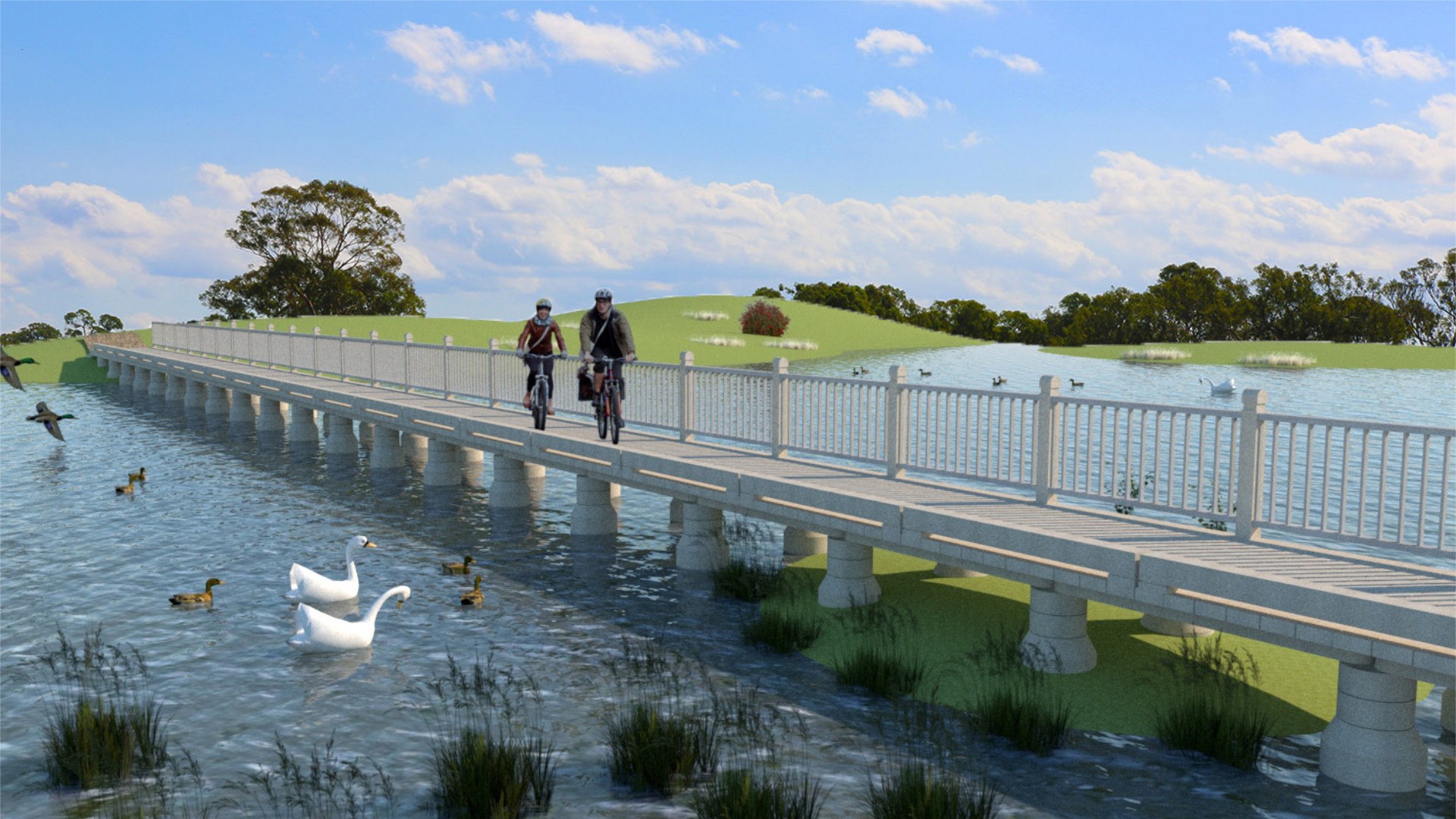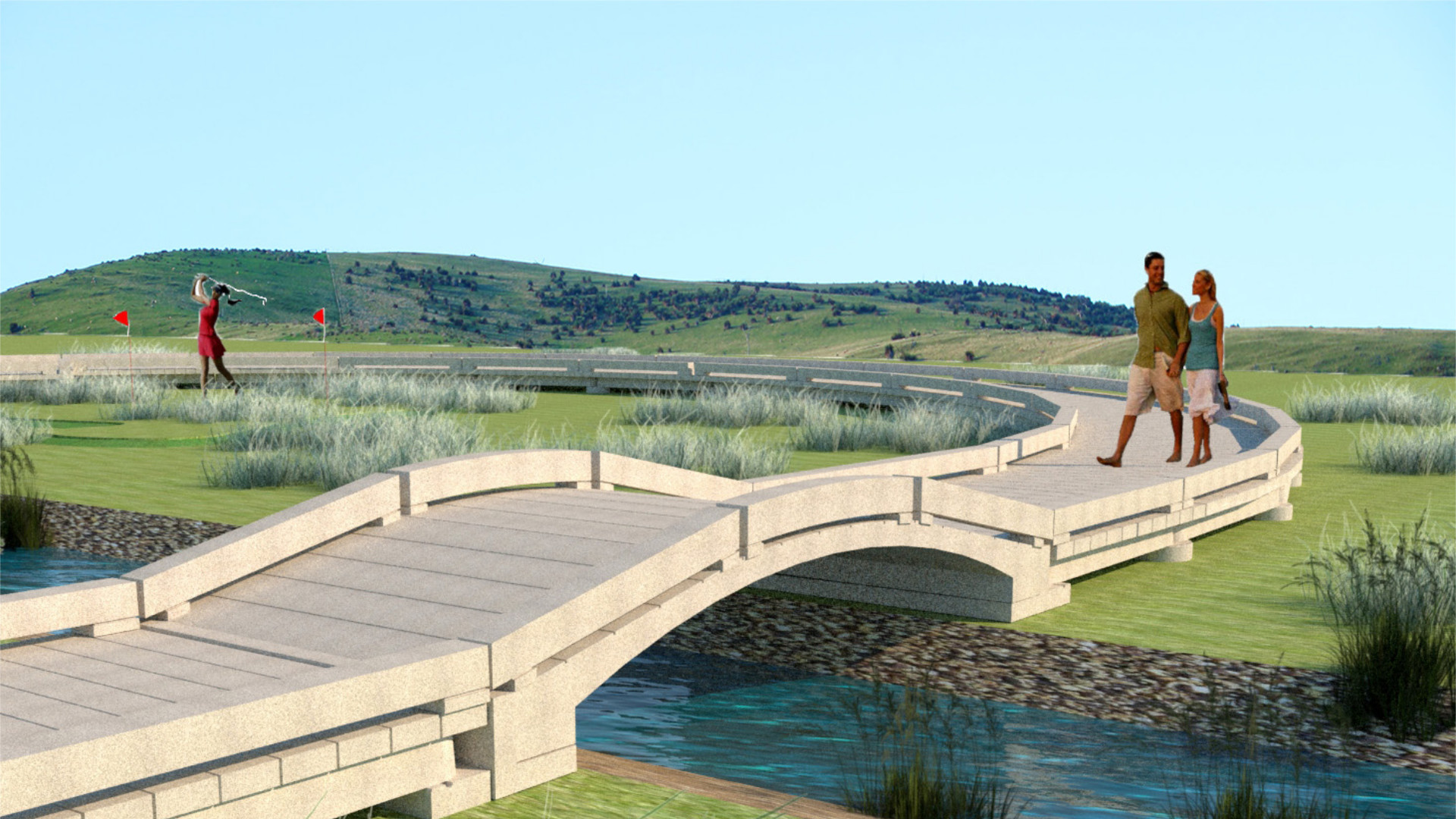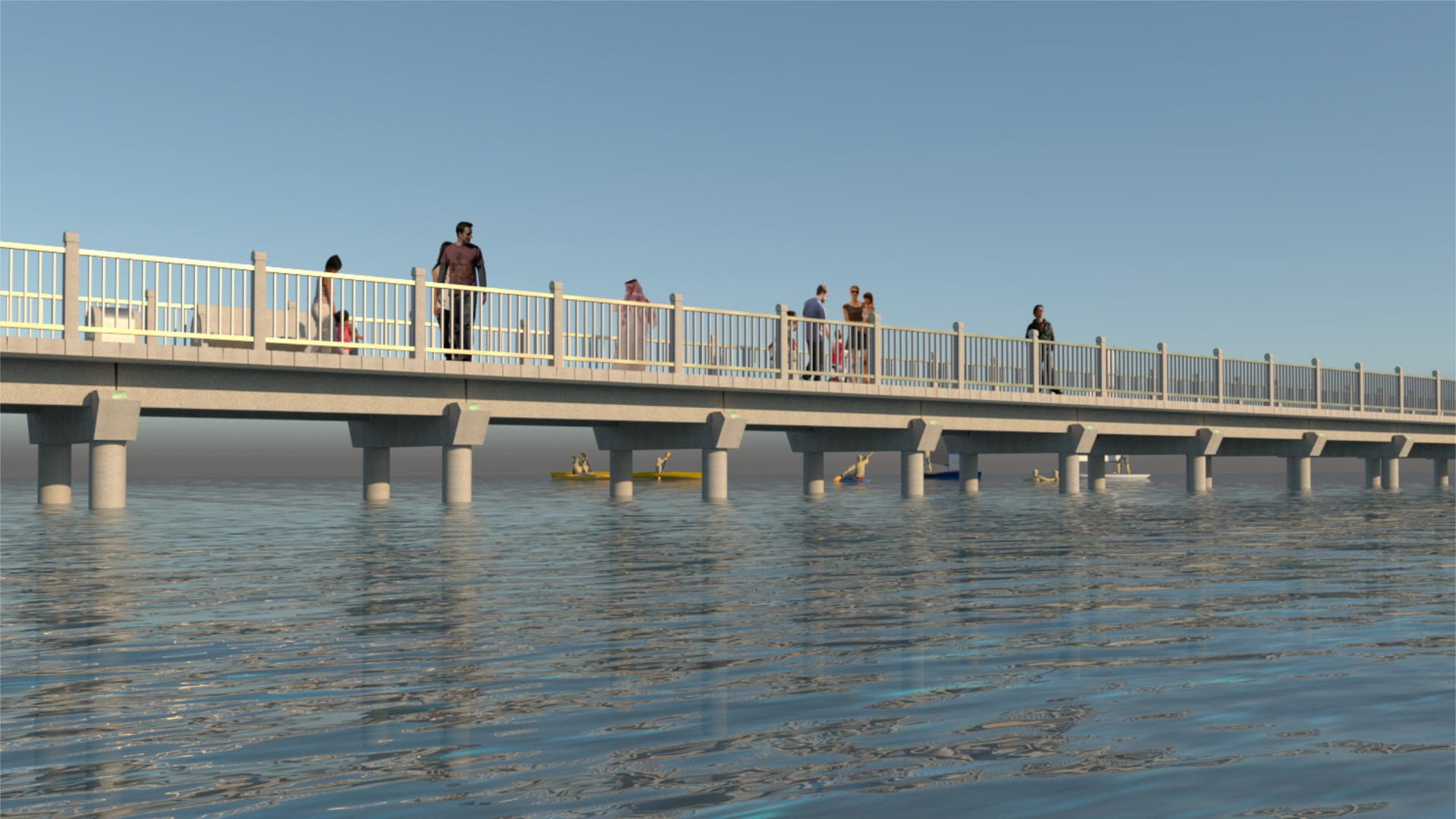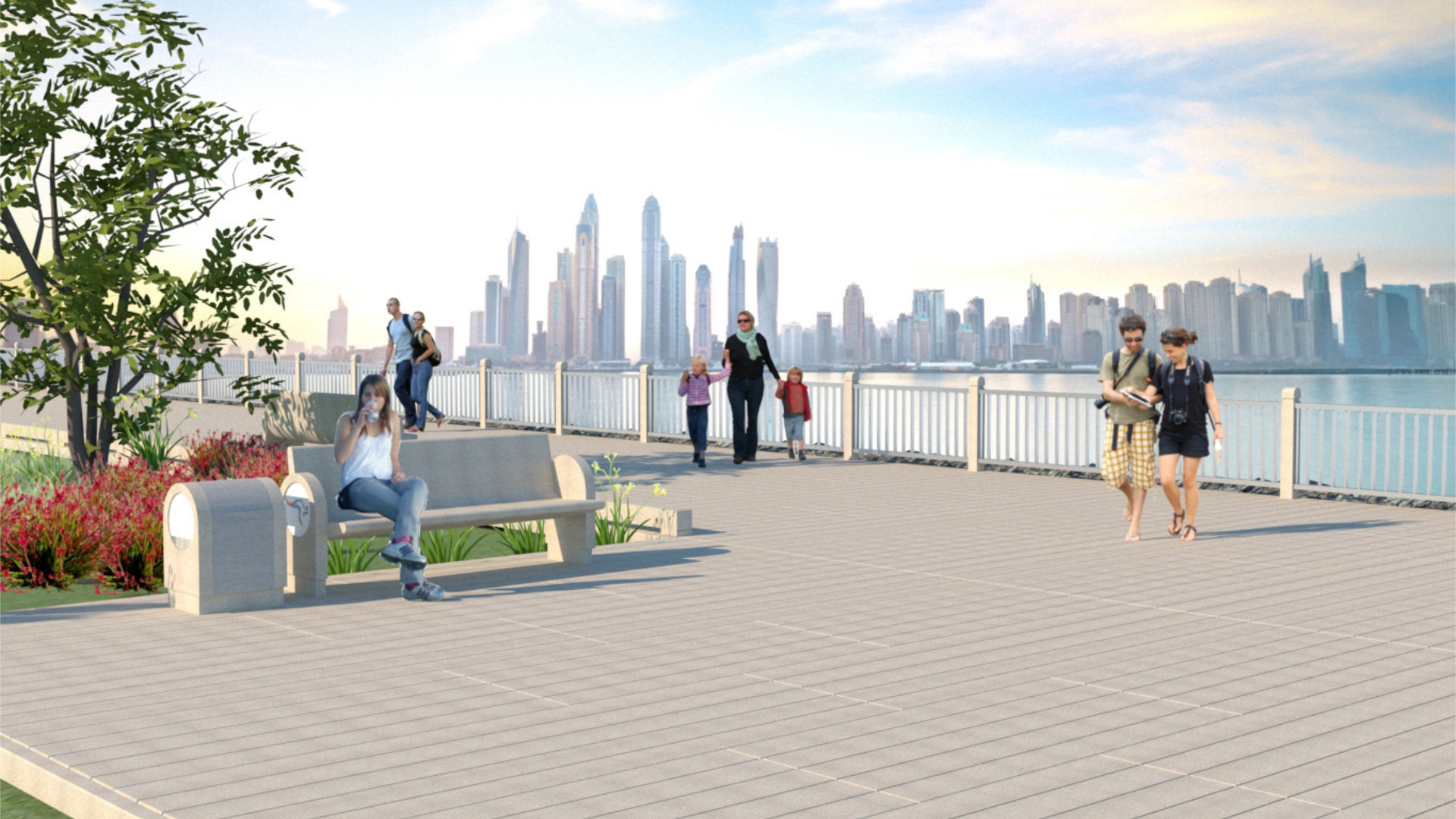A Quality Assured Product
The KangaTrak precast concrete systems are designed on best practice Engineering and Architectural performance, they are simple and practical for construction and are "fit for purpose". The individual precast concrete components (piers, beams, treads, and abutments) and the high density urethane fixtures work together as integrated systems.
Design is undertaken to AS3600 Concrete Structures and AS 4997 Design of Maritime Structures, and they are manufactured with marine grade concrete and with quality assured factory manufacturing practices, this provides high quality Architectural finishes and a highly durable concrete product with a long life-span of 50+ years in extreme environments (coastal, desert, wetland and alpine environments).
Base Treatment and Substructures
The precast components allow for simple and fast installation generally onto a compacted FCR base for on-ground installations, with a minimum bearing capacity of 100kPa for "pedestrian" loads and 150kPa for "light vehicle" loads, systems can be designed for heavier loads.
To achieve an elevated boardwalk a range of substructures can be used to support the KangaTrak as a superstructure. The substructures may include potted concrete pipes with in-situ concrete backfill, concrete piles or steel piles, or screw piles. All substructures should be designed by a qualified engineer.
Design Standards and Design Loads
All KangaTrak Systems are designed to comply with the Building Code of Australia and the relevant Australian/New Zealand Standard AS 1170 which defines criteria required for Public Assembly and Structural Design Actions. The "pedestrian load" systems are designed for a 4.0kPa uniformly distributed load (UDL), or a 4.5kN concentrated point load (not to be imposed concurrently with the UDL). The loadings are for pedestrian only but allow for a light service vehicle, with a maximum gross vehicle wheel load not exceeding 450kg, or 4.5kN.ie. a maximum gross vehicle weight of 1.8 ton.
Changes in Level and Alignment
The KangaTrak boardwalk system includes interlocking taper treads and special pier and beam shapes (profiles) that allow for both vertical and horizontal change of direction/alignment, thus avoiding the need for any onsite cutting, as is the case with other timber or WPC type products. The tapered treads (at 2.5 degree and 5 degree taper) and the special pier shapes allow for both straight or curvilinear boardwalk alignments; allows for integrated ramps and a variety of ways to make grade changes, either with the contour or with median grade runs with ramped sections connecting these. The modular piers can be adjusted up or down to suit level changes and the deck grade changes should be in accord with relevant Australian standards, the maximum grade change for the kangaTrak systems is 1 in 14 = 7 % or 4 degrees.
A standard KangaTrak system has a decking height/level of 775mm level when using the precast concrete piers (pier cap, pier risers, pier base). Generally for heights greater than 1 metre a Certified Qualified Engineer is needed to design an appropriate substructure, onto which the KangaTrak can be installed. Where the deck level is above 500mm then a kick rail or handrail may be required.
Tread Textures/Finish and Colour
A broad range of tread textures/finishes and colours are available to provide an aesthetically pleasing outcome and to provide a compliant non-slip finish to AS/NZ 4586-1999 Surface Class V (very low risk).
Textures/finishes include: an off-form smooth finish with a non-slip shotblast, brushed finish, a range of exposed aggregate finishes, a honed finish still with a nonslip shotblast. Colours are cast throughout the concrete mix and are quality oxide lines that do not bleed. Colours are supplied to account for an initial fading of colour value over the first year to 18 months due to UV light, however the final colour stabilises.
Fast and Simple Installation
The "on-ground" boardwalk and promenade systems can be installed using light weight lifting machinery such as small excavators and skid steer loaders. Where the ground surface vegetation needs to be conserved or where one cannot install off the surrounding ground surface then a "top down" installation method can be used. (See Top-Down Installation Method). This method is best suited to wetland or mangrove environments, and for installations that go over tree roots.
Where larger boardwalk/jetty systems are to be installed using heavy on-deck machinery then the protection of the tread surface is required. The systems can be installed in coastal environments onto marine piles/pipes or screw piles, all to be installed By others.
Sustainable Engineering Practice
Engineers designing and specifying KangaTrak as a quality assured precast concrete product have an opportunity to have a beneficial influence on the sustainability of timber resources (particularly on old growth forest sourced timbers), they will also be designing a long-life asset with very low maintenance requirements.
This sustainable design philosophy and practice will provide for a lower carbon footprint and will ensure alternative low life cycle and polluting alternative products are not used. The best way to ensure Sustainable Engineering is followed is by including performance based specifications.
See Sustainable Engineering Solutions for Trail Blazing PermaTrak(KangaTrak) Boardwalks" by Magryn Engineers.
Alternative Products and their Durability/Bushfire Issues
There are a range of alternative boardwalk decking products used in boardwalk projects (various plastic/wood (WPC) and FRP products) that have durability issues and low structural performance under natural weathering conditions, particularly in extreme coastal, wetland and desert environments, and being recognised more now is the need for the use of low combustibility materials or for boardwalks that are Bushfire Proof.
It is worth reading various independent Research Authority Reports:
Nopsema, Safety Alert 60, Fibre Reinforced Plastic (FRP) deck gratings
MedCrave, Degradation of fibreglass composites under natural weathering conditions



